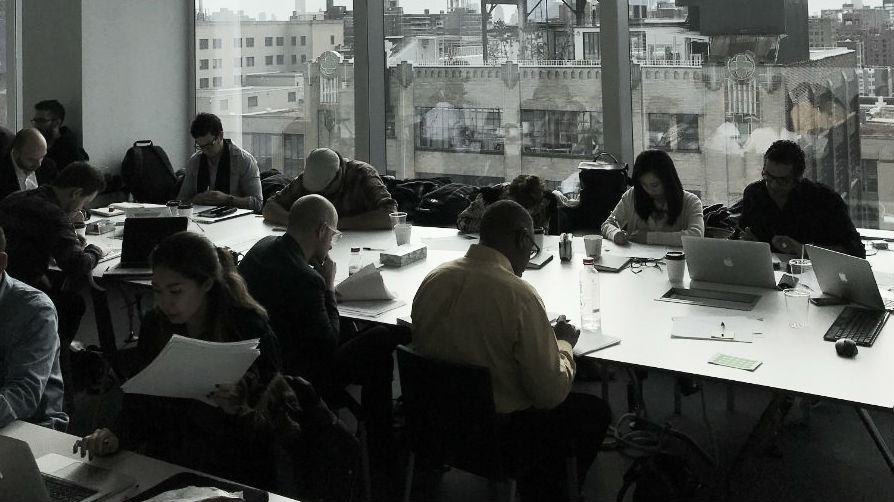PACIFIC Designers Head to NYC for Three Days of Innovation and Collaboration
Members of PACIFIC's creative team came back from the Big Apple enthused and inspired.
PACIFIC Creative Director George Stein and Lead Designer Guilherme Sant’Ana recently returned from the Product & Service Design Innovation workshop, hosted by renowned digital ad agency R/GA. The workshop promised three days of intensive boot camp, where participants would learn the “Connected Design” approach of researching, ideating, creating, prototyping, and branding products and services. To put it more simply, the workshop would teach the methods R/GA uses when working with clients to improve their products, services, and brands.

PACIFIC CEO Norman Brauns saw the workshop as a perfectly timed opportunity to hone existing processes at PACIFIC. As PACIFIC grows and takes on more clients, he wants to ensure that it remains laser-focused on using innovative methods to build meaningful relationships between customers and brands.
The workshop ran from December 6-8, 2017. Roughly twenty people attended the course; surprisingly, only a few of them were classically trained designers. Other attendees included account managers, strategic planners, creative directors, and various marketing professionals, hailing from as far away as Spain and France. Diverse backgrounds aside, every participant shared at least one common goal: they all attended the course because they wanted to become true innovators.
The participants were broken into groups and issued a challenge: to create an innovative product or service to help make NYC become a sustainable city (in terms of water and energy usage) by 2030. It was no small feat! But Sant’Ana explained that the true goal wasn’t to solve a problem in three days, but to apply the processes they learned in the workshop and turn theory into practice.
Some of the key takeaways they brought back to PACIFIC include:
- The service landscape is changing, and we must change accordingly. With new technologies driving human behavior, consumers want to use these new behaviors in novel ways—and companies must design products and services accordingly.
- There’s a new approach to design. Design is not just software, art, or words; it’s innovation. It’s knowing how to take a client’s problem and apply a strategic “thinking, making, and scaling” process to design a solution in a customer-focused way.
- There’s no substitute for collaboration. A robust team with varying backgrounds brings more to the table. When you’re trying to innovate and find a solution, you should build a team with multiple experts working on a common problem.
- Hands-on learning is transformative. You can spend hours learning about the theory of design simulations, prototyping, and immersions, but you’ll only truly understand their importance through hands-on use of those concepts.
- Focusing on people is key. There’s no denying the importance of search ranking and optimization, but these practices should be part of a problem-solving customer experience, not the be-all, end-all of a team’s efforts.
- Customer loyalty is becoming more and more fleeting. You can “hook” customers by building services and products that they rely upon in daily life. Only when you build this reliance and trust will you earn customers’ loyalty.
For Sant’Ana, the best part of the workshop was confirming his existing priorities. “I’ve always kept customers’ problems and needs at the forefront of my work,” he explains. “But the workshop confirmed this way of thinking and provided a structural approach that I can apply immediately to our existing processes.”
Stein’s biggest takeaway was that we’re working with a new technology landscape, and we need to adapt. “We need to understand the new landscape and the touch points, and think about how to incorporate tech to create better systems,” he reveals. “We can tell better stories when we’re living in customers’ preferred environments, using their preferred technologies.”

The pair agrees that what really resonated with them was the idea that stories compel with words and images, and technology compels by making life easier. As a company, PACIFIC needs to focus on doing both, so we can help brands become entrenched in their customers’ lives.
In addition to applying what they’ve learned to their daily processes, Stein and Sant’Ana see PACIFIC as leader in design innovation. “Eventually, as we grow,” says Stein, “we’d love to host similar workshops here.”